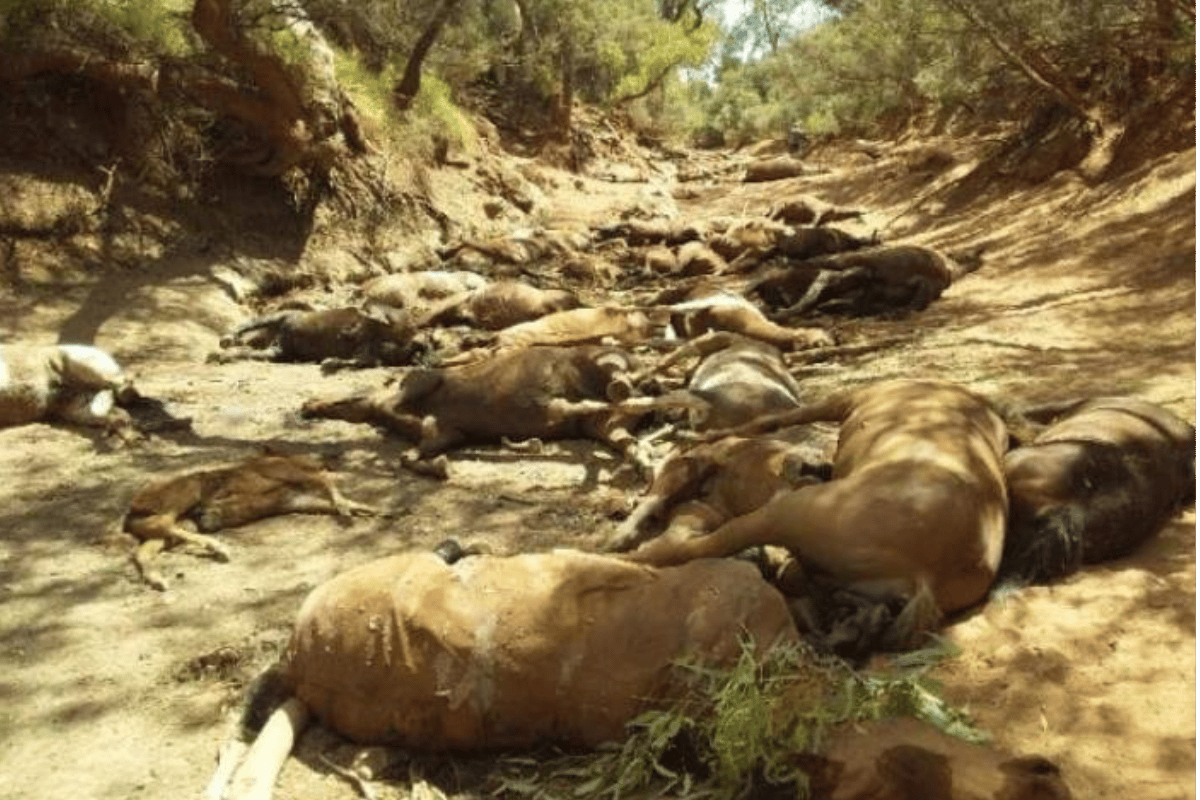
A heartbreaking Facebook post has shown the devastating toll of the extreme heatwave conditions facing Australia.
The post shares images of often unseen victims of extreme weather – animals – showing two dozen dead brumbies at the base of a dry waterhole called Deep Hole, near Santa Teresa in Central Australia.
The region has been struggling through a heatwave, with two weeks of temperatures exceeding 42 degrees celsius.
The mass grave of horses was discovered by a group of local community members who anticipated the water levels at Deep Hole would be low. They instead discovered it completely dried up, something that had never happened before.
There the group found the dead, partially decomposing wild horse carcasses stretching around 100 metres. The animals are believed to have died of dehydration and heat.
Ralph Turner, who took the photos, said it was “just terrible to know these beautiful animals died this way”.
Santa Teresa media mentor Rohan Smyth said the community was now deeply concerned about the welfare of the local wild horse population, as well as possible pollution to Deep Hole and other waterways the dead animal’s carcasses could cause.
“The prospect of any living creatures perishing in this way has left many locals devastated,” he wrote.

Top Comments
Poor buggers. I've had water out for the birds around my place (don't tend to see many other animals, bit too in town for that) the last couple days.